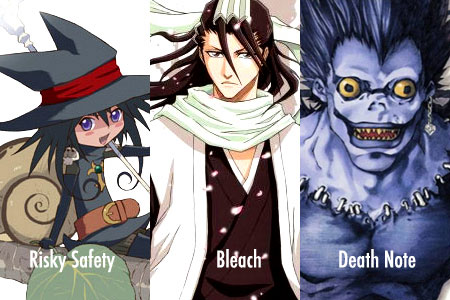Ask John: Why Do Shinigami Look Different in Every Anime?

Question:
I can’t help but notice that nearly for every anime or manga series that have Shinigami, there is a different kind of Shinigami. Full Moon wo Sagashite, Risky Safety, Yami no Matsuei, and Death Note to name a few, all have shinigami, but each are different looking and even do different things. I understand that mythological beings tend to differ from story to story, but they usually don’t vary this much. Is there any reason for this that you know of?
Answer:
Japan has an ancient heritage of mysticism, spirituality, and faith in the supernatural. So it may come as a surprise to many American anime fans to learn that shinigami, gods of death that guide human souls to the afterlife, are not a part of traditional Japanese folklore. Unlike the Shinto pantheon of gods and traditional Japanese monsters like kappa and various other yokai, the concept of “shinigami” was created in Japan only little more than a hundred years ago. Furthermore, the concept was introduced to Japan through literature rather than visual art, which explains why the shinigami concept doesn’t have a singular consistent appearance.
The concept of the shinigami is thought to have first appeared in Japan during the later 1800s in the form of a “rakugo” (spoken word) performance titled “Shinigami,” based on the Grimm’s fairy tale “Der Gevatter Tod” (The Grim Reaper). The Western image of the Grim Reaper originated from widely accepted Greek scholarly theory during the Hellenistic period (323 BC to 146 BC). As a result, the image of a cloaked skeleton carrying a large scythe became a constant and prevalent image for the Grim Reaper. Japanese culture, however, doesn’t have a similar widely adopted and universally agreed upon image of the shinigami. As a result, the role of the shinigami is consistent in Japanese fiction, but the appearance changes according to the whims of the artist.
Works including Shinigami no Ballad and Risky Safety adhere relatively close to the European origins of the Grim Reaper. Although the shinigami in these series aren’t skeletons, they are figures clad in robes that carry scythes. (Note that Risky’s diminuitive size is an exceptional accident. Typical shinigami in Risky Safety are the same size as normal human beings.) The shinigami of Full Moon wo Sagashite appear as cute and playful teens dressed in bright, fanciful clothing. The shinigami of Bleach serve as a sort of supernatural Shinsengumi, and thus wear costumes that resemble the 19th century militia’s uniform. The shinigami of Yami no Matsuei resemble normal human beings while the shinigami of Death Note resemble inhuman monsters.
Mythological and religious specters including devils, angels, kappa, oni, and yurei have ancient, established, and uniformly accepted appearances by virtue of the age of the concepts, and in some cases, the origins of the concepts. The modern Japanese shinigami, however, has neither a centuries old agreed upon appearance or a singular Japanese original detailed description. As a result, the shinigami that appear in anime vary between collecting human souls and ensuring that souls transition safely to the afterlife at their appropriate time, and the appearance of shinigami in modern manga and anime varies wildly depending on the ideas that the artist wishes to convey.

